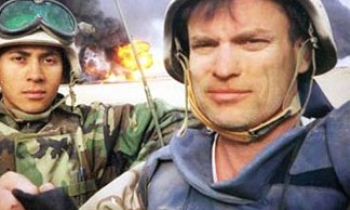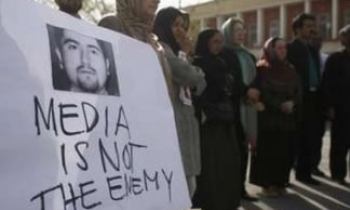It has to choose between commerce and credibility.
Newspapers, the earliest form of the media, have been around in some sort of a way as long as the printing press. In Elizabethan London, they took the form of pamphlets filled with grisly tales of murder, executions, witchcraft and “monstrous” creatures. Political news was absent as it was considered “dull and boring”. The world’s oldest surviving headline dated December 2, 1620, said “The new tidings out of Italie are not yet come”.
The power of the newspaper in a democracy got unleashed in 1820, when publishers rode on Queen Carolina’s trial to garner public support for her. George IV, the then king, was adamant that his wife, Carolina of Brunswick, should not become queen and so sought to divorce her. Newspapers took up her cause to build overwhelming public pressure that enabled Queen Carolina to win—but unfortunately she died a year later suddenly and the great effusion of 1820 was quickly forgotten. However, the trial of Queen Carolina benefited her adopted country. The British people had gained confidence that, even without the franchise, their voice would be heard. Public opinion had arrived in politics, finding outlets wherever it could—on streets, in petitions and in a popular press that, once it had learnt how to annoy rulers, never stopped. In fact, the power of the press, more so the media, grew so fast that during the Russian Revolution, Lenin and Trotsky identified the media as one of the five institutions to gain control of as a means to get ascendancy. The media as an institution has never looked back since and only grown in power, stature and control on the general public. And in a democracy where “freedom of speech” is a fundamental right, the media is the ultimate expression of that right. Clamp down on it, and democracy begins to crumble.
Formal advertising emerged in the late 19th century, taking the form of “salesmanship in print” as defined by an early guru, John Kennedy. It evolved through the 20th century from being just information dissemination to creating desire and engagement, reaching its crescendo in the late 20th century, when it was branded “the want makers”. If the the media is representative of “freedom of speech” in a democracy, advertising (and marketing) is the expression for “freedom of choice” , the other fundamental right in a democratic world.
Marketing gives consumers choices and advertising enables them to choose more intelligently and freely.
In the branding space, the media is an interesting and complicated category. A media brand has a commercial side—a responsibility to give the market and consumer what they want; yet it also has a conscience side—a responsibility to society and the citizen. And these are not often conciliatory. The content within the media is both the product and its promotion. Its content can ride on social trends; but simultaneously it can influence social trends more powerfully than any other product category can. It has overwhelming power on the public. It is both B2B (business to business) and B2C (business to consumer). B2B—the advertiser—is its source of revenue and sustenance; however, this depends on the brand’s power in the B2C segment—viewer, reader, listener. The higher the user figures, the more revenue it can garner from the advertiser because it can deliver more value for the advertising buck. So not surprisingly, there is a symbiotic relationship between advertising and the media.
There has been a media explosion in this country since the economic liberalisation process started in 1991. Our televisions have over 200 channels—international, national, regional and local. And the print media has moved into specialisations like fashion and automobiles. The radio is opening up and growing by the day. And India has always been a big billboard country with larger-than-life cut-outs and messages—used so successfully by political parties and campaigns. The net and mobile are booming new media. The new media and the proliferation of options within the traditional media are putting pressure on media brands in print and television to garner readers and viewers. Television spot rates are today the lowest in this country—which in itself is not a bad thing but does put pressure to generate revenue and audiences. And this is where conflict sets in. The head of a leading television news channel, a few years ago prophetically and rightly, said: “The day editorial and sales merge, that day will spell the death of media.”
Two distinct trends emerged in the media in 2006, clearly reflecting the crossroads it is at today. The first: the review of and the conviction of the culprit in the Jessica Lall case. Much like the 1820 trial of Queen Carolina, the media took on the role of the social ombudsman and championed the cause of Jessica Lall in early 2006. The laudable efforts of the media led to the case being reopened and the accused getting convicted by the end of the year. This is the conscience face of the media—activities that build its credibility and strengthen the pillars of democracy.
On the other hand, there has emerged a disturbing new trend in the media—the promotion of “mass voyeurism”. Getting into the private lives of people and celebrities and putting them in the public domain. The “supposed impending” marriage of a celebrity couple and the happenings in a celebrity birthday party moving from Page 3 to Front page are manifestations of this trend. Vir Sanghvi in a recent piece did say rather mournfully: “Mika Singh today makes better news than Manmohan Singh”. This is trivialisation of news at its best. And the oft-repeated claim by media brand managers is that this is what consumers want. The crowning glory of this intrusion into lives is the serial “Big Boss”, which is actual legitimisation of mass voyeurism. This is perhaps a return to the “pamphlet world” of the 17th century, when sensational events make for better news than actual reportage.
Simultaneously the continuous pressure from the advertising world to merge commercial brand messages into editorials for a price is another disturbing trend. Some media brands are already into selling editorial space. And a movie promoted itself recently by having its lead stars read the 9 o’clock news on a very reputed news channel. These are, sure, media attempts to garner resources from their advertising brothers. But this leads to a threat to their credibility.
While media brands may argue that it’s the yin and yang of its content and both can co-exist, somewhere choices need to be made. If media brands remain apathetic to the credibility of their editorial, they suffer the danger of losing respect and credibility. And that will be a loss for Indian society and citizens. After all, the media needs to be the watchdog of society, a mirror that makes citizens and administrators soul-search and take necessary corrective action. And advertisers and advertising agencies need to recognise their needs as citizens to ensure that their pursuit of consumers doesn’t infringe on the credibility of society’s most powerful means of expression—the media.
The BBC is one example that has successfully maintained its credibility in the face of commercialisation of most markets. It can be sought as a source of inspiration.
Something worth thinking about.









